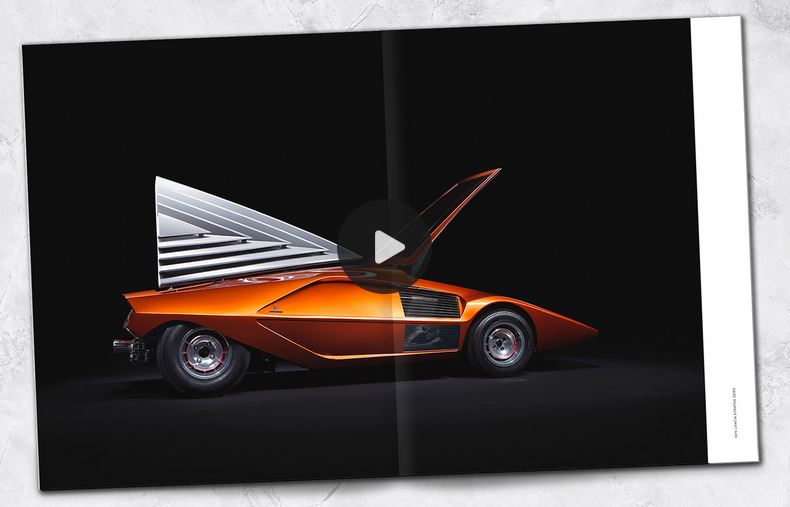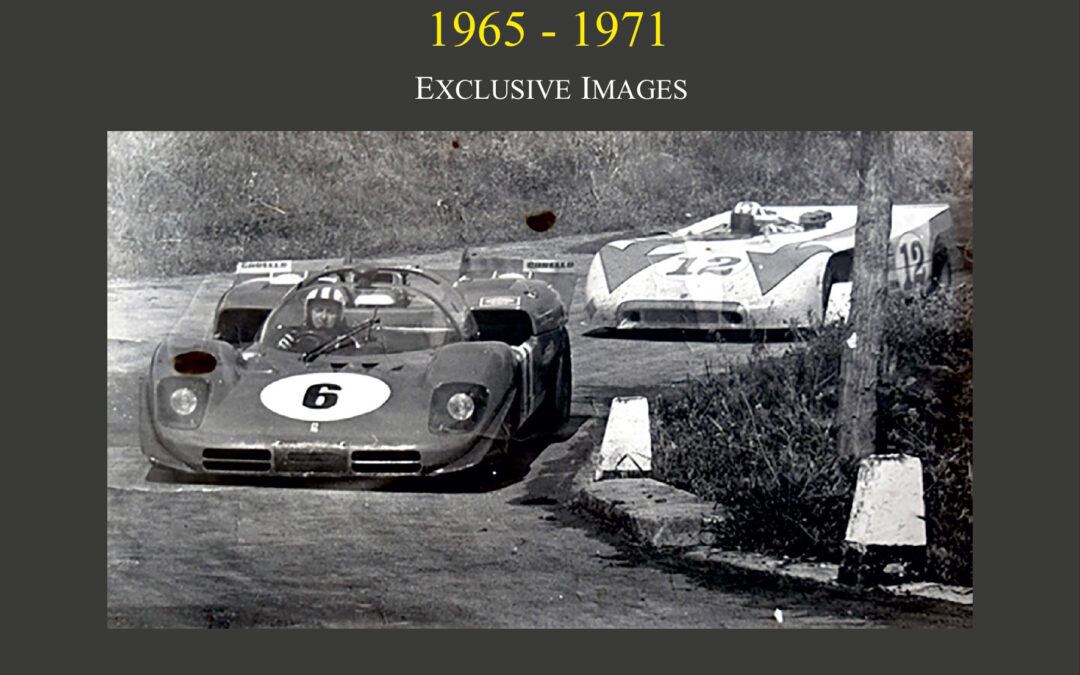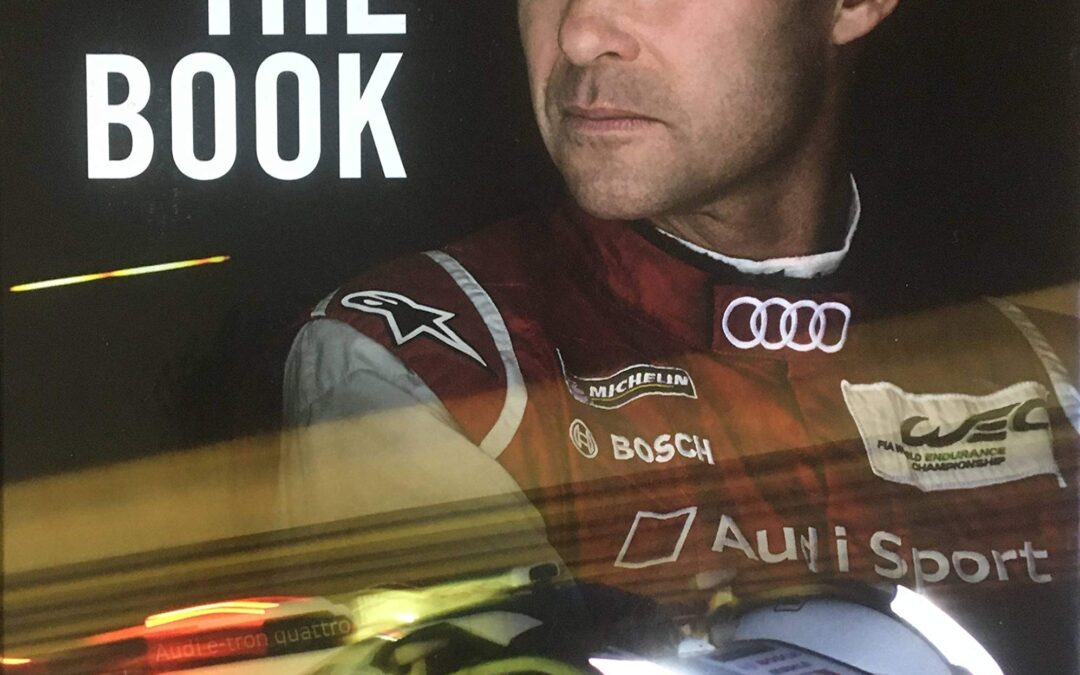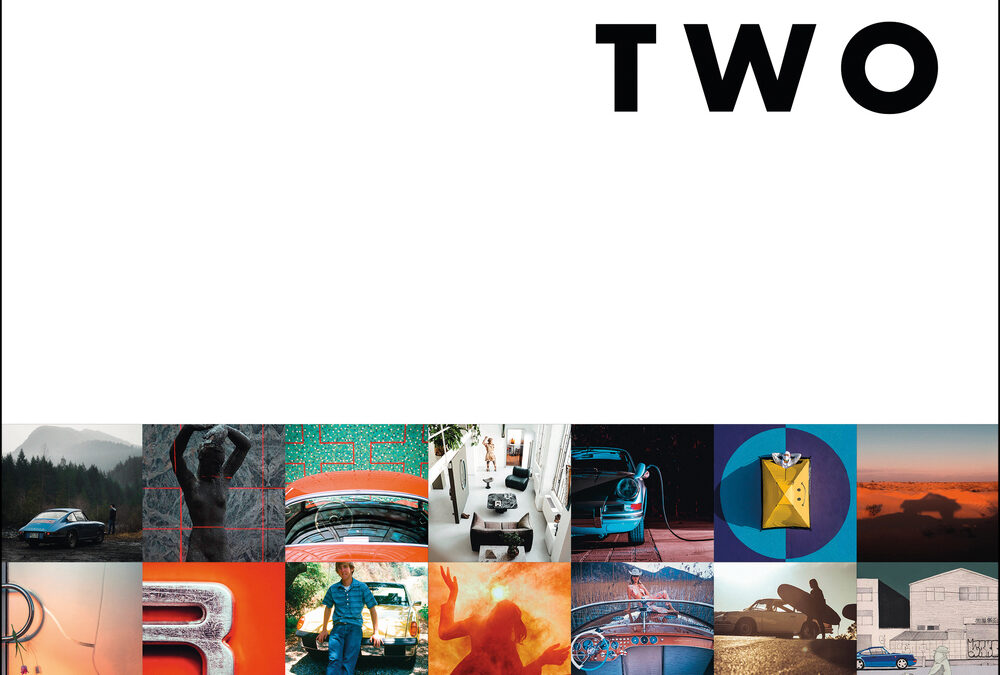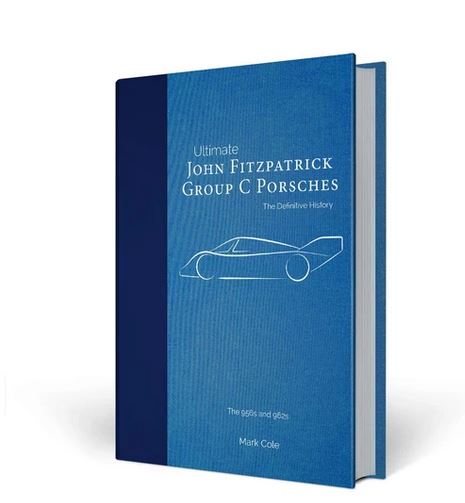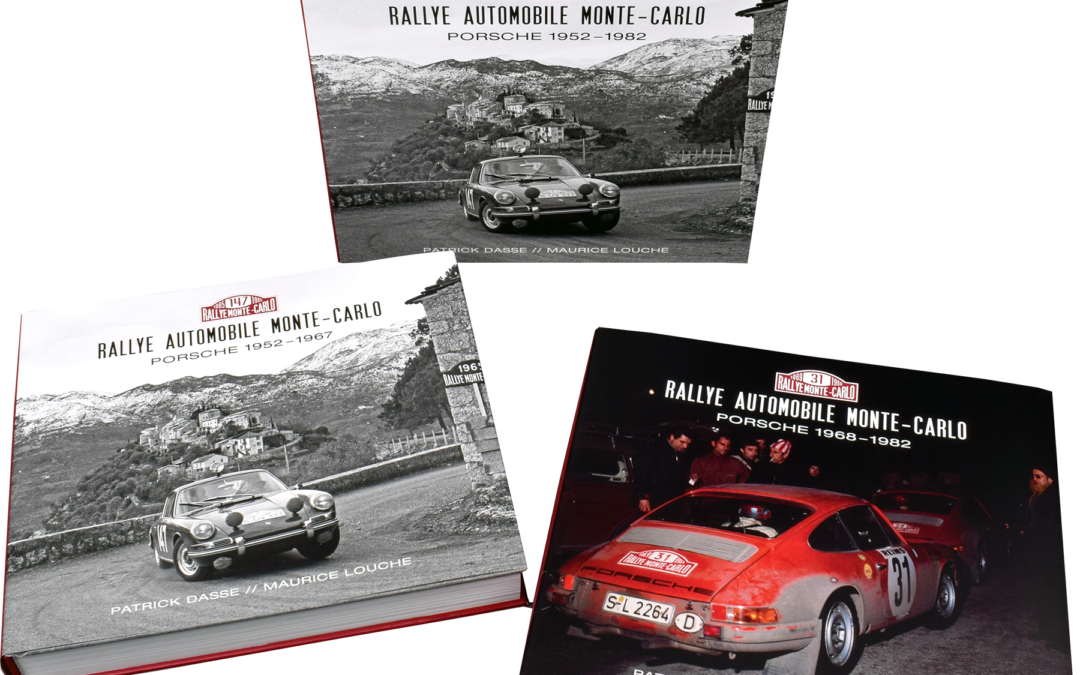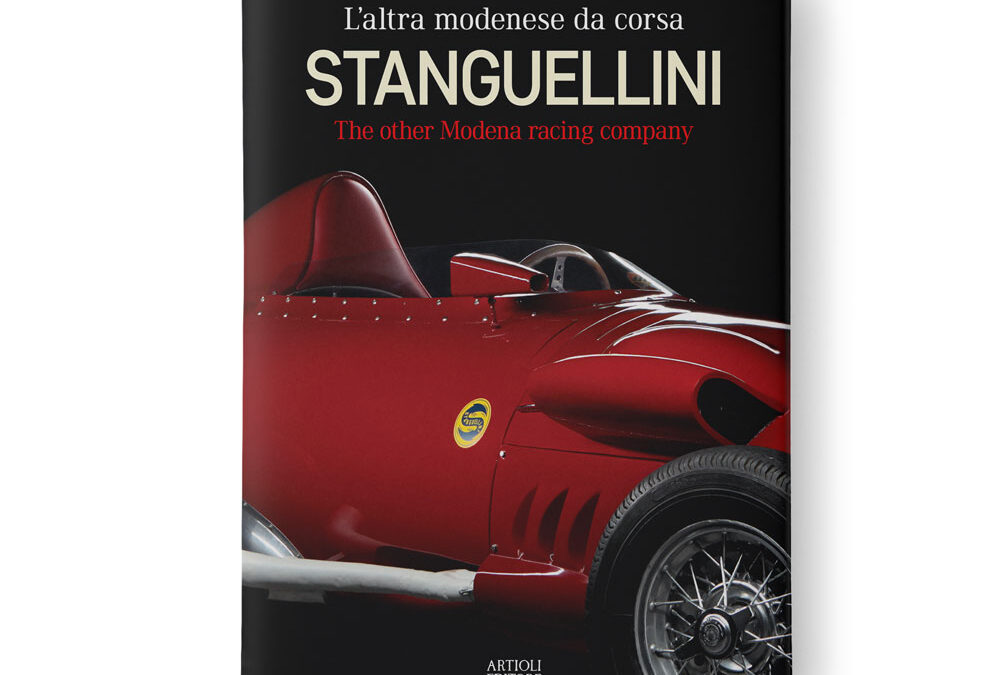
The first of the ten chapters included in the book is a bit of a provocation. In fact, it recalls how a ‘small’ Stanguellini Sport 1100 car, thanks to excellent road holding, beat the new and still ‘green’ Ferrari with a 12-cylinder engine of 1500 cc, in some races of the 1947 season, the debut one for the newly-founded Prancing Horse manufacturer. The ‘snub’ received from another Modena-based company, which was just as committed to the construction of sports cars, albeit with a smaller engine displacement, certainly annoyed Enzo Ferrari but in any case, he had very little to complain about. He had too much respect and friendship for the ‘Magician’ Vittorio Stanguellini, ever since the latter showed up in Modena racing circles in the company of his father Francesco, a pioneer of local motorsport. Stanguellini of Modena was a large family: in the second half of the 19th century, Celso, father of Francesco Sr., had founded a company for the construction of orchestral kettledrums with patented mechanical tuning. From there, it was a short step to the ‘mechanics’ of automobiles: Francesco Sr. became Fiat’s first representative in Modena, while his son Vittorio later extended the agreement with the Turin-based company, but his passion and technical ability also lead to the tuning and construction of racing cars as early as the early 1930s. Vittorio certainly knew his way around and he put together a small empire, based above all on the Sport 750 and 1100: the workshop in Viale Moreali, and later the larger one in Via Schedoni, become a worldwide benchmark, which from 1958/59 was confirmed with the construction of the Formula Junior cars (what would later become Formula 3), intended for up-and-coming drivers. The Stanguellini Formula Junior with a 90 hp Fiat 1100 engine and a top speed of 200 km/h was the most popular and successful car in the crowded category. However, the Formula Junior regulations required that the engine was derived from a production car, albeit with a wide range of tuning possibilities. As he was linked to Fiat, in the 1960s Vittorio Stanguellini, now flanked by his son Francesco Jr., built some Formula Junior (including the modern ‘Delfino’) and then Formula 3 single-seaters, with engines derived from the ‘1300’ and ‘124’ of the Turin-based company. Thanks to the copious archive material of the brand (photographs and documents), the book reconstructs in detail the history of the manufacturer from the blue ‘S’ on a yellow background (the colours of Modena), summarized by the extensive Museum, set up at the time by Francesco and now impeccably curated by his daughter Francesca: fifth generation of the ‘racing’ Stanguellini family. A chapter of the book is dedicated to the Museum and it is basically a ‘guided tour’ of the cars and the curiosities it hosts. The same cars, perfectly restored, were photographed outside in a spectacular way and can be admired in the ‘portfolio’ combined with the same book.
Hardcover
English and Italian Text

Britain established the world’s first aircraft factory in 1909 after the Short brothers met up with the American Wright brothers and struck a deal. The industry expanded rapidly to rise to the challenge of World War One with such thoroughbreds as the Camel and the SE.5. The post-conflict slump proved to be difficult but classics such as the Moths, the Hart family and the Gladiator maintained Britain’s leadership. Another war loomed and iconic types such as the Hurricane, Lancaster, Mosquito, Spitfire and the Meteor jet appeared.
With the return of peace over 20 major manufacturers faced inevitable contraction. The misguided Bristol Brabazon airliner was a dead end but the superb de Havilland Comet and Vickers Viscount led the field. Canberras, Hunters, Lightnings and the V-bombers met the Cold War confrontation.
For the first time here is a readable, highly-illustrated, examination of the entire industry; its heritage and the changes it faces in the 21st century, both technical and political. The life and times of the 40 ‘big names’ from Airbus to Westland: aircraft, designers, factories, failures and successes, mergers and closures are all explained, supported by statistical tables and copious illustrations. Here is a celebration of a world class industry that remains at the cutting edge of excellence.
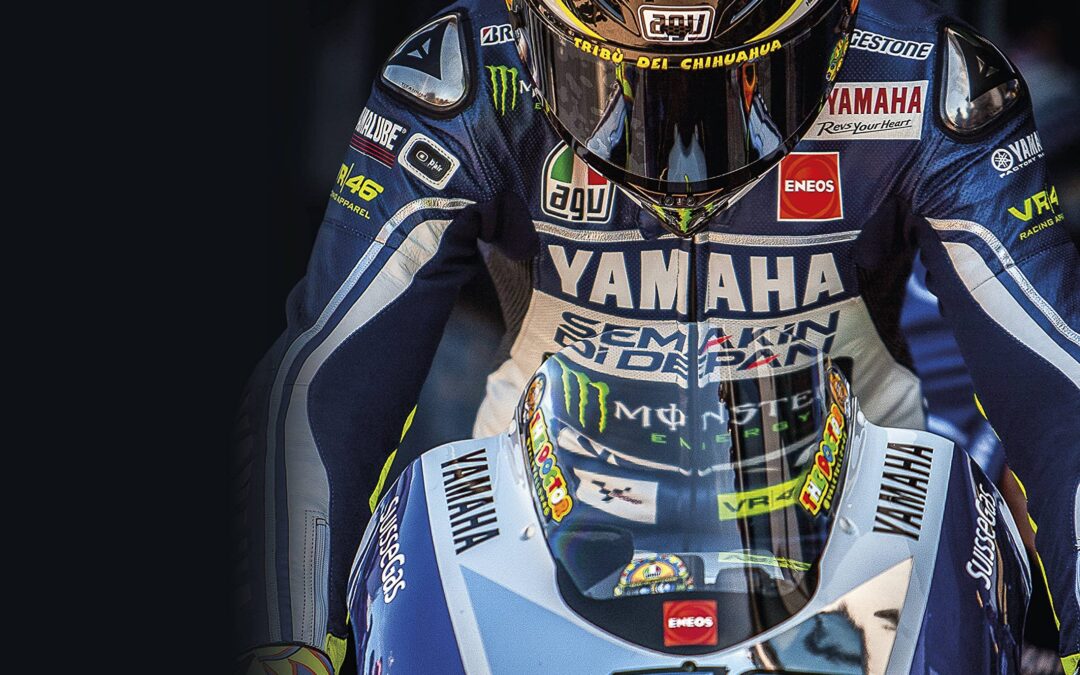
Valentino Rossi’s retirement brings down the curtain on an incredible career in the MotoGP motorcycle world championships.
With his nine titles, including seven in the premier class, he is widely regarded as the greatest motorcycle racer ever, and his 26 seasons of Grand Prix racing make him unique across both motorcycling and Formula 1. Rossi has been captivating fans since he won his first Grand Prix at the age of 17 and even in his final season, at the age of 42, he has been riding faster than ever.
In Valentino Rossi: All His Races, by top journalist Mat Oxley, each and every one of these races comes under the microscope, complete with perspectives about Rossi’s achievements, the controversies, his character, and analysis of his bikes. This is a Valentino Rossi book like no other, with photos by Henk Keulemans, who was shooting grand prix racing when Rossi’s father Graziano was winning races.
- Early days, from karting and minimoto bikes to a first GP win, on a 125 Aprilia in the 1996 Czech GP, then onwards to claim the 125cc world title in 1997.
- Moving up to the 250cc class in 1998 brought four consecutive end-of-season wins riding for Aprilia, followed by a decisive title in 1999 with nine victories.
- Grabbed by Honda to race its super-successful NSR500, Rossi graduated to the ‘class of kings’ for 2000, almost becoming champion that season — but the following year he sealed
- MotoGP, for 990cc four-stroke bikes, took over and Rossi immediately reigned supreme aboard his Honda RC211V, securing back-to-back titles in 2002 and 2003, before a surprise departure to uncompetitive Yamaha.
- Rossi rates his first year with Yamaha, 2004, as his best: defying expectation, he won first time out on the YZR-M1 and took a fourth successive title with nine wins.
- In six more seasons with Yamaha, 2005–10, Rossi collected three more championship crowns, his 2008 success especially sweet because it involved a fightback after two leaner years.
- Rossi’s move to Ducati looked to be an appetising all-Italian prospect but his two winless seasons there, 2011 and 2012, were disastrous.
- A return to Yamaha never quite recaptured his greatest glories, but Rossi was championship runner-up three times and came very close to another title in 2015.
Beautifully designed and comprehensively illustrated, this book is the complete record of Valentino Rossi’s remarkable career in motorcycle racing.
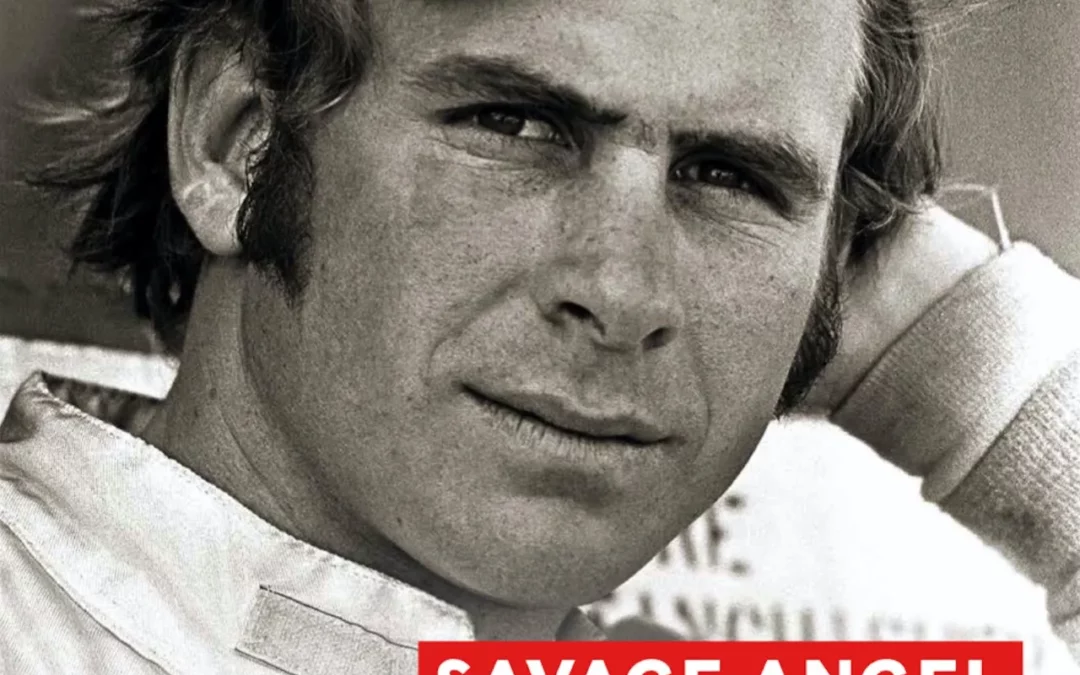
SAVAGE ANGEL author, Ted Woerner, was an 11-year old Swede Savage “super fan” sitting in the turn 4 grandstand at Indianapolis Motor Speedway on May 12, 1973. He watched and cheered as his hero broke the track record in time trials for the Indianapolis 500.
When race day finally came around more than two weeks later, he was sitting in his 6th grade classroom on a Wednesday afternoon in suburban Chicago. He listened to the rain-delayed race through a wired earplug connected to a transistor radio that he had brought to school that day. His excitement when Swede took the lead of the race turned to shock as he heard the news over the live radio broadcast that his hero had just been involved in a horrific crash only an hour into the race. He struggled to hide his emotions from his teacher. Swede Savage would die from complications from his injuries thirty-three days later.
“Soon after Swede’s death, I read that his wife was at the race, that she was pregnant, and that she witnessed his crash from the grandstand behind the pits,” recalls Ted. “I became immediately concerned about the well being of Swede’s wife and new baby, who by the time I read this book had already been born. I just couldn’t imagine how a child could enter the world under such circumstances.”
Through an improbable turn of events, Ted would finally meet Swede’s posthumous child, Angela Savage, as a grown adult over forty years later. A sacred friendship was formed between them, forged in the crucible of the same fiery tragedy. Now, several years after they first began the arduous and painful task of chronicling Swede’s life story and Angela’s complex and tumultuous life that followed, their book, SAVAGE ANGEL, is complete.
The book is a long overdue biography of Swede Savage. We finally get to know the man behind the windscreen as he pursued his childhood dream to win the Indianapolis 500. But the story doesn’t end with his death. It goes on to describe what it was like to be in the immediate family of a man whose lifetime passion was the world’s most dangerous profession. We feel their raw emotions as his final days unfolded in an Indianapolis hospital’s intensive care unit and learn how they attempted to go on with their lives after suffering such an immense and unexpected loss.
Through recent medical studies, it is now known that the baby girl born to Swede’s widow, Angela Savage, likely suffered transgenerational PTSD in her mother’s womb. Sheryl Savage not only witnessed her husband’s horrific crash from the grandstand, but also endured unimaginable stress as Swede struggled for life for another month thereafter. The book goes on to explain how the complex mental health issues, addictions, alcoholism, and general instability in Angela’s life, now appear to have been genetically hard-wired into her as a result of a statistically nearly impossible confluence of rare disorders and life experiences rarely found in a single person.
After being understandably vacant from the sport of auto racing her entire life, Angela Savage decided to accept an invitation from a small group of her father’s fans to come to the Indianapolis 500 for the first time in her life, forty-one years after the death of her father there. With additional support provided by the Indianapolis Motor Speedway, the trip was a life-changing experience. At Indy, she was showered with unconditional love. The embrace she felt from “the racing family,” and her unimaginably brave confrontation of the place where her father’s life ended, would change her life forever.

- History and Development
- Maintenance and Repair
- Performance Tuning
- Installing Accessories
- Buyer’s Guide
| The E-Class Owner�s Bible” is an E-class buyer�s guide, maintenance handbook and technical reference source wrapped into one. It is full of tech tips, service hints and system descriptions, plus lots of insightful information about the W124 E-Class chassis.
This book can help steer you through the purchase of your first Mercedes-Benz, provide the information necessary to maintain your E-Class to factory standards, give you the assurance to speak knowledgeably to your service professional and provide you with the hot setup for better road handling.
Models included in this Mercedes-Benz repair manual:
Gasoline engine:
- 260E
- 300E, 300E 2.6, 300E 2.8, 300E 4MATIC
- 300CE, 300CE cabrio
- 300TE, 300TE 4MATIC
- 400E
- 500E
- E320 sedan, coupe, cabrio and wagon
- E420
- E500
Diesel engine:
- 300D Turbo, 300D 2.5 Turbo, 300TD Turbo, E300 Diesel
|
|
The prospective buyer will also find tips on what to watch out for, why a pre-purchase inspection is important and why one model may be preferred to another. Do-it-yourself owners will discover a huge hands-on maintenance chapter to help keep their E-Class at peak efficiency.
Technical highlights:
- Comprehensive maintenance procedures, including HVAC microfilter replacement, brake pad and rotor replacement and engine oil and fluid change procedures listing the necessary tools, tightening torques and fluid capacities.
- Year-by-year analysis of E-Class technical highlights, including the inspiring 500E sports sedan and when the multi-cam M104 engine replaced the M103 single cam workhorse.
- Buying tips on how to get the best car for the least amount of money, things to look for during the test-drive and how having a prepurchase inspection can potentially save you thousands of dollars.
- Seasoned advice on choosing the right repair shop, be it an authorized Mercedes-Benz dealer, an independent specialist or an all makes-all models shop.
- Detailed technical information on vehicle systems, including engines, suspension, drivetrain, body and interior features.
- Performance modifications, including a listing of parts needed to upgrade to the Sportline suspension.
- A brief historical overview of Mercedes-Benz, the world�s oldest car company.
To bring you this authoritative volume, Bentley Publishers has teamed up with Stu Ritter, a 25-year independent Mercedes-Benz repair shop owner/technician and current technical editor of The Star (the magazine of the Mercedes-Benz Club of America).

MILLE MIGLIA’S CHASSIS is a journey through the cars that took part to one of the most famous races of motorsport’s golden era. It is an ambitious project and the first of its kind: its aim is to document all the cars which participated at every edition of the original race between 1927 and 1957. MILLE MIGLIA’S CHASSIS will be developed in a series of 10 volumes: each car featured that took part to the Mille Miglia from 1927 to 1957 is presented with two lists: one about all the Mille Miglia speed races in which it took part, a second one of following events under the Mille Miglia name. To conclude, a third separate list comprehends the categories of the car, the stone from which spring the pages of the book and includes all the races and events in which the car took part worldwide in the years. Moreover, the cars that participated from 1958 to the events in the name of the Mille Miglia appear in another section of the book. Written for the motoring enthusiasts all over the World, MILLE MIGLIA’S CHASSIS is the definitive opus giving its readers a full perspective of the diversity and ingenuity of the machinery running the most beautiful race the world has ever seen.
In the second volume of the series there will be 45 cars featured which took part in the original editions of the race, plus another 11 of those participating in events under the Mille Miglia name from 1958 to today. MILLE MIGLIA’S CHASSIS will be a true collector’s item, a “must have” for those who want to have all the cars which took part in the Mille Miglia in their bookshelf!
Limited edition of 1400 copies
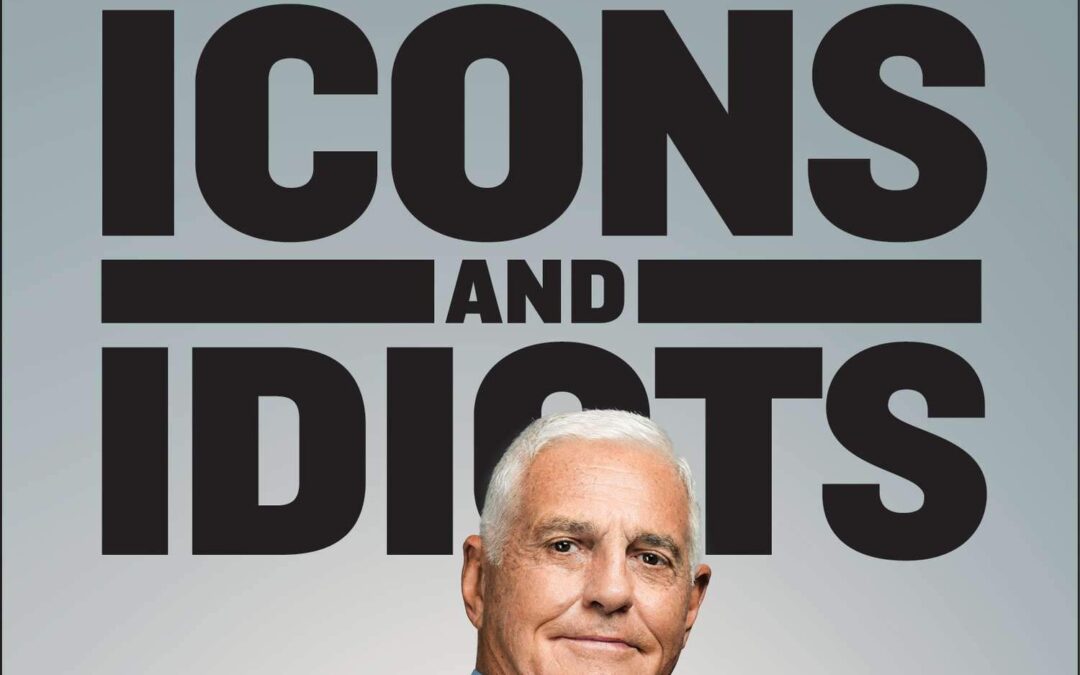
When Bob Lutz retired from General Motors in 2010, after an unparalleled forty-seven-year career in the auto industry, he was one of the most respected leaders in American business. He had survived all kinds of managers over those decades: tough and timid, analytical and irrational, charismatic and antisocial, and some who seemed to shift frequently among all those traits. His experiences made him an expert on leadership, every bit as much as he was an expert on cars and trucks.
Now Lutz is revealing the leaders—good, bad, and ugly—who made the strongest impression on him throughout his career. Icons and Idiots is a collection of shocking and often hilarious true stories and the lessons Lutz drew from them. From enduring the sadism of a Marine Corps drill instructor, to working with a washed-up alcoholic, to taking over the reins from a convicted felon, he reflects on the complexities of all-too-human leaders. No textbook or business school course can fully capture their idiosyncrasies, foibles and weaknesses – which can make or break companies in the real world.
Lutz shows that we can learn just as much from the most stubborn, stupid, and corrupt leaders as we can from the inspiring geniuses. He offers fascinating profiles of icons and idiots such as…
- Eberhard von Kuenheim. The famed CEO of BMW was an aristocrat-cum-street fighter who ruled with secrecy, fear, and deft maneuvering.
- Harold A. “Red” Poling: A Ford CEO and the ultimate bean counter. If it couldn’t be quantified, he didn’t want to know about it.
- Lee Iacocca: The legendary Chrysler CEO appeared to be brillant and bold, but was often vulnerable and insecure behind the scenes.
- G. Richard “Rick” Wagoner: The perfect peacetime CEO whose superior intelligence couldn’t save GM from steep decline and a government bailout.
As Lutz writes:
We’ll examine bosses who were profane, insensitive, totally politically incorrect, and who “appropriated” insignificant items from hotels or the company. We’ll visit the mind of a leader who did little but sit in his office. We’ll look at another boss who could analyze a highly complex profit-and-loss statement or a balance sheet at a glance, yet who, at times, failed to grasp the simplest financial mechanisms—how things actually worked in practice to create the numbers in the real world.
The result is a powerful and entertaining guide for any aspiring leader.

The life of Derek Bennett and the success of Chevron Cars are inextricably entwined in the Chevron Story. After years eking out a living mending cars in back street garages, Derek rose to become one of the world’s leading builders of racing cars. Chevron is the fairy tale story of how he did it.
Stars such as Alain Prost, Niki Lauda, Brian Redman, James Hunt, Keke Rosberg, Nigel Mansell, Graham Hill, Peter Gethin and Jody Scheckter all drove Chevrons. In his book “Chevron – The Derek Bennett Story” – David Gordon explains how they got on.
After travelling many thousands of miles to trace the people who knew and worked with Derek, motor racing journalist David Gordon tells the Derek Bennett story and that of his brainchild Chevron Cars, charting the contributions of the many people who played a part in the company’s meteoric rise to success, and relating why it all happened the way it did.
Derek Bennett designed and built successful racing cars for 13 years from 1965 until his untimely death in 1978, but another four decades later the appeal of those cars shows no sign of waning.
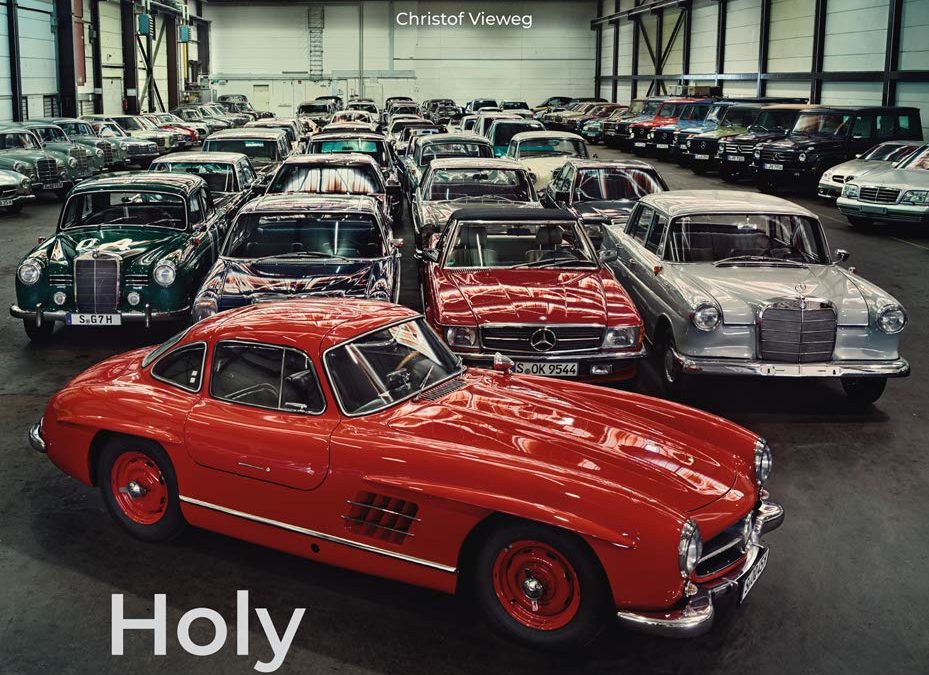
A thrilling photographic account of the treasure trove of cars kept by the Mercedes-Benz Museum in Stuttgart that are not currently on display to the public
The Mercedes-Benz Museum in Stuttgart is one of the largest and most visited industrial museums in the world. But the 160 or so automobiles on display are only a small part of the shiny chrome treasures that form the Mercedes-Benz Classic vehicle collection. Another 1,000 historical models are ‘parked’ in secret places outside Stuttgart – these secret places are called the ‘Holy Halls’.
This collection is the treasure trove of the brand. It has existed since 1923 and offers a comprehensive overview of the model history of Mercedes-Benz. Cars with special technology and equipment are stored here, as are the silver arrows of Caracciola, Lang and Fangio, the Pope’s carriages, the state cars of the young Federal Republic of Germany or Mercedes models that became collectors’ items due to their prominent previous owners. Some of these exhibits are well protected and waiting in special wooden boxes for their next use at exhibitions, fairs, events or classic car races. Others stand next to each other as silent witnesses of the past. Each time a model is modified, the collection is extended by the last vehicle of the discontinued series, which experts believe will be one of tomorrow’s classic cars.
The ‘Holy Halls’ are not open to the public; enquiries from editorial offices and TV teams have often been rejected. But, during the years 2016 to 2018, almost all the vehicles of the Mercedes collection were photographed. Thus, a unique photographic collection was created, the automobile history from more than ten decades; many of the previously unpublished photographs are exclusively available here in this book. In addition, Mercedes-Benz Classic agreed to open the ‘Holy Halls’ for an external photo team and provide information about the car models stored there.
For the first time, it has been possible to produce a fascinating illustrated book with panoramic and detailed shots from the ‘halls’, and lively photo reports on cars that tell stories – from the first Benz batting motor car to the latest Formula 1 racing car. Equally thrilling are the stories of the unique specimens and prototypes that are stored in the ‘Holy Halls’: Mercedes models that never went into production are presented for the first time. The stories about the selected automobiles of the vehicle collection are supplemented by historical recordings from the Mercedes-Benz Classic archive.

The brave efforts of the pilots and crew of the RAF during the Second World War are well-known but there was another body of aviators that played a significant role in the conflict – the men and women of the civilian airlines.
The British Overseas Airways Corporation (BOAC) was formed shortly after the outbreak of war in November 1939 by the amalgamation of Imperial Airways and British Airways. During the war BOAC operated as directed by the Secretary of State for Air, initially as the transport service for the RAF and with no requirement to act commercially. The inaugural BOAC had eighty-two aircraft, a large proportion of which were seaplanes and flying boats. With 54,000 miles of air routes over many parts of the world, ranging from the Arctic to South Africa, from the Atlantic coast of America to the eastern coast of India, the aircraft of the BOAC kept wartime Britain connected with its colonies and the free world, often under enemy fire. Over these routes, carrying mail, cargo and personnel, the men and machines of BOAC flew in the region of 19,000,000 miles a year.
There can rarely have been a moment, throughout the war, when aircraft of the British merchant air service were not flying somewhere along the routes, despite losses from enemy action. This book explores much of their war history between 1939 and 1944 (the year that marked the 25th anniversary of British commercial aviation), something of their lives and their achievements in linking up the battlefronts – at times cut off from any direct land or sea contacts with the Home Front – and in transporting supplies through the new, dangerous and often uncharted regions of the air. With the ‘Speedbird’ symbol or the Union Flag emblazoned on its aircraft the BOAC really did fly the flag for Britain throughout the wartime world.
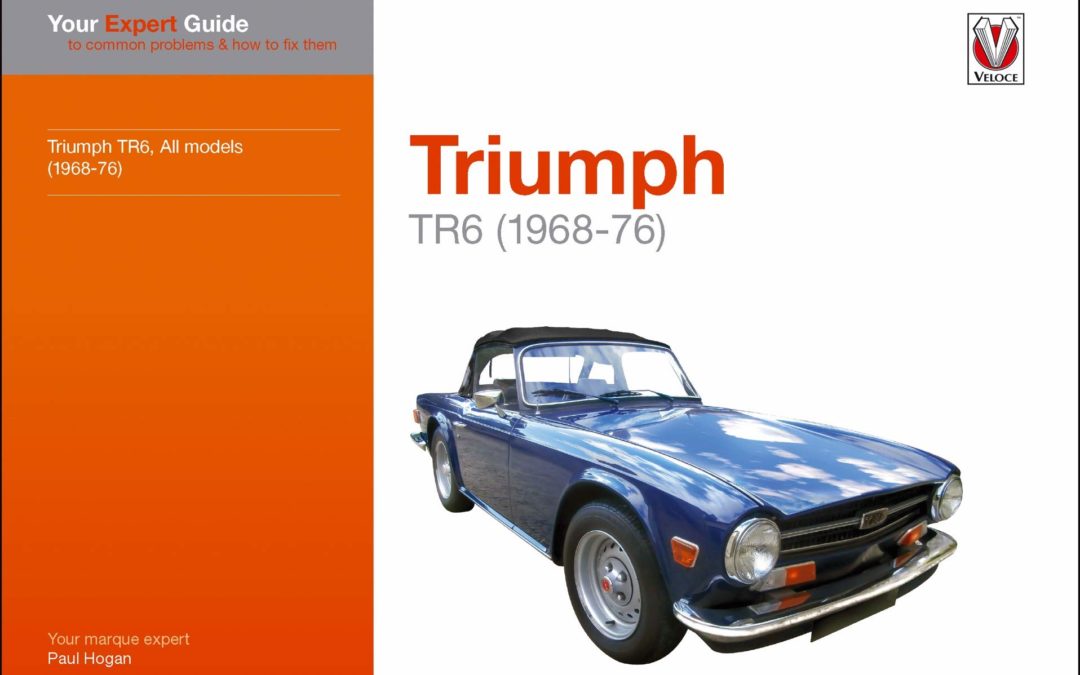
The TR6 was often described as ‘the last hairy-chested British sports car.’ Its modern lines may have hidden its rugged construction dating from another era, but its performance was anything but. 120mph was easily attainable, and it found a ready market in all parts of the world. These cars are now 50 years old, but still attract a huge following worldwide.
Triumph TR6 is designed to offer owners of TR6s an insight to some of the problems that can arise, and how to fix them. By breaking the car down into easy to follow sections, engine, drive line, suspension, etc, you can see not only where the problems arise, but also how to solve them. Information is also provided on improvements, owners’ clubs and spares suppliers to help keep your car in good condition and on the road.

Dedicated to the cars that have run the Mille Miglia, with photos and documents which illustrate and describe their participation. It is an ambitious project, the first of its kind and will be developed in a series of 10 volumes. Each car that participated in the Mille Miglia from 1927 to 1957 is presented through two tables: one covers all the original Mille Miglia in which it took part, a second table covers subsequent events related to the Mille Miglia. A third table includes the categories to which the car belongs according to AUTOMOTIVE MASTERPIECES and includes all the races and events in which the car has taken part all over the world over the years. In addition, the cars that have participated since 1958 at continuation and classic Mille Miglia events appear in another section of the book. In the first volume: 49 cars that took part in the original editions of the race and 42 of those taking part in the subsequent events related to the Mille Miglia from 1958 to today.
The book will be published entirely by AUTOMOTIVE MASTERPIECES under the patronage of the Mille Miglia Museum, written by Sandro Binelli. To increase the reading experience in the book, each car will have its own QR code, allowing a digital extension never seen before to even more historical details.
MILLE MIGLIA’S CHASSIS marks the beginning of a unique collection for the serious collector and historian, “something to have” for the enthisiast who wants to have all the cars that took part in the Mille Miglia in his library!
Limited edition of 1500 copies
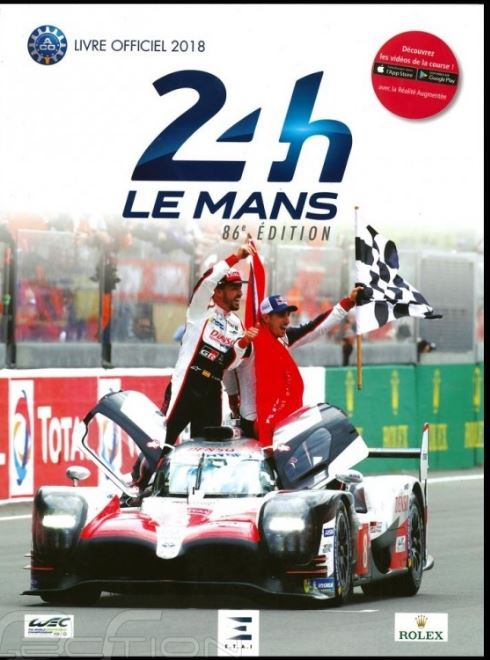
This is the official year book of the 86th Le Mans 24 Hours.
In 2018, Toyota the odds-on favourite came to the Sarthe to break its jinx and take on the Gods of Le Mans who, up till then, had always shown extreme cruelty by robbing the Japanese manufacturer of a triumph that seemed promised to it on several occasions, in particular: 1998, 1999, 2014, 2016 and 2017. Finally, the world no.1 car manufacturer broke the spell and emerged on top.
Toyota honoured its rank and scored its first victory in the Le Mans 24 Hours on its 20th attempt as a works team clinching a double into the bargain! The win went to Sébastien Buemi from Switzerland and Kazuki Nakajima from Japan, who had just missed out on victory two years earlier, backed up by double F1 world champion, Fernando Alonso. The Spaniard, who was the star of this year’s race, added another jewel to the Triple Crown (victory in the Le Mans 24 Hours, the Indy 500 and the Formula 1 World Championship title) that is the stuff of dreams.
But the three drivers had to really push as their teammates never gave them an inch. Completing the podium was Rebellion Racing and its star from the Vendée Thomas Laurent who had hit the headlines a year earlier by finishing second overall and first in LM P2. This year the no. 26 Oreca 07 dominated this category before being disqualified in post-race scrutineering gifting victory to the Signatech Matmut team and Nicolas Lapierre-André Negrao-Pierre Thiriet.
Back in the GTE Pro category after a 7-year hiatus BMW was unable to prevent the Porsche 911 RSR “Pink Pig” from winning the category thanks to Kevin Estre, Michael Christensen and Laurens Vanthoor. The Zuffenhausen firm also scooped the pool in GTE Am with the Proton Racing team co-owned by Patrick Dempsey with a little help from an 18-year-old French rookie called Julien Andlauer (remember this name).
With Rafael Nadal as starter and Jacky Ickx as Grand Marshal the latest staging of the greatest endurance race in the world was full of interest. Relive it through the many marvellous photos on display in this annual!
